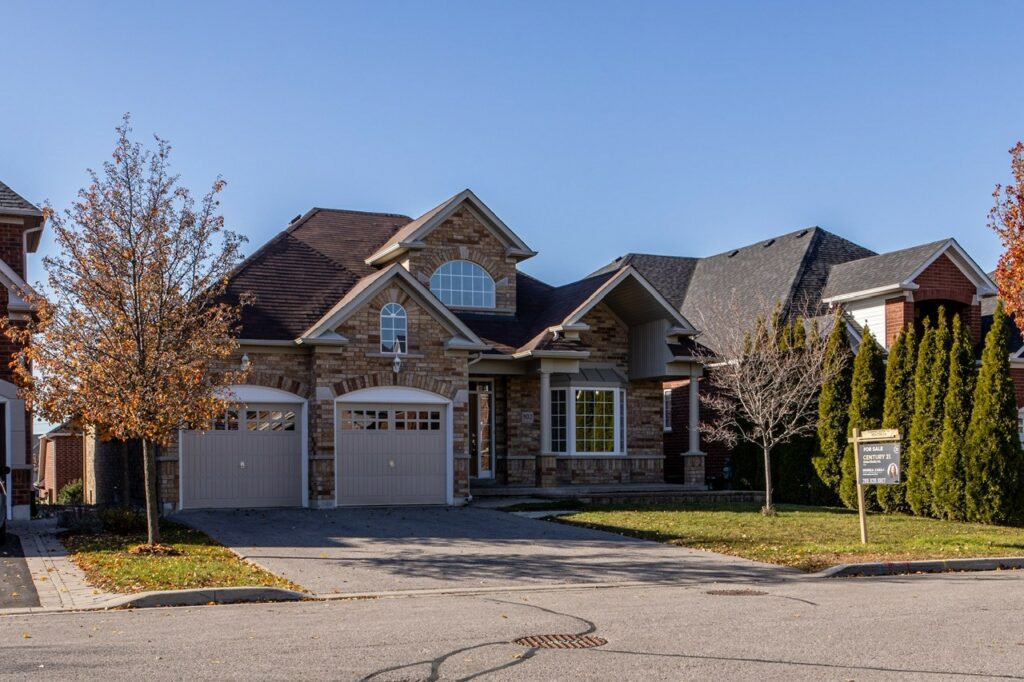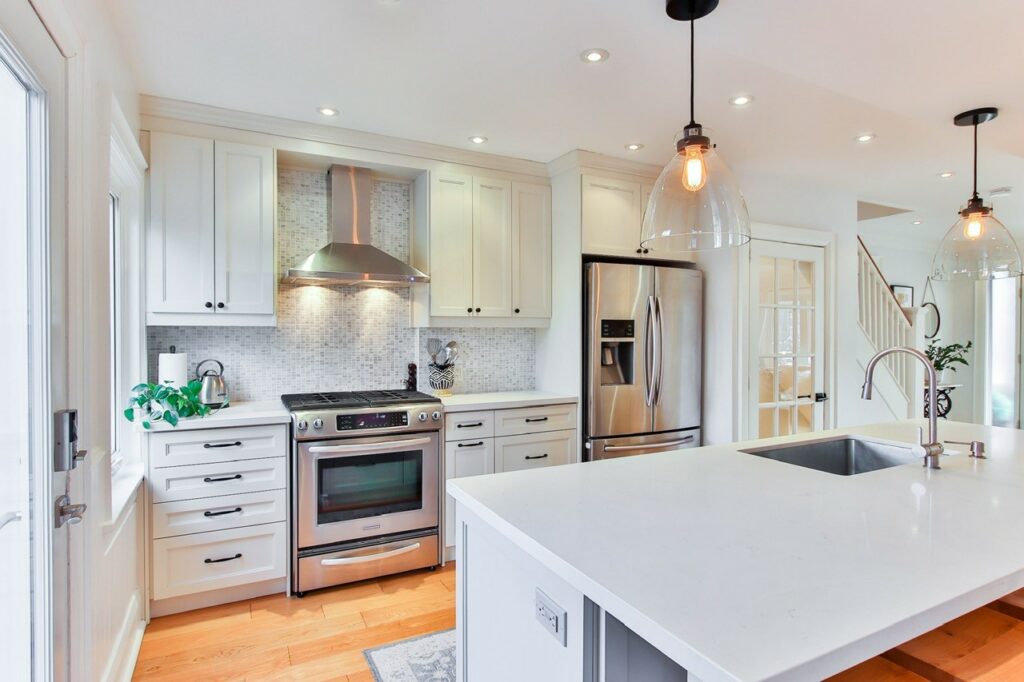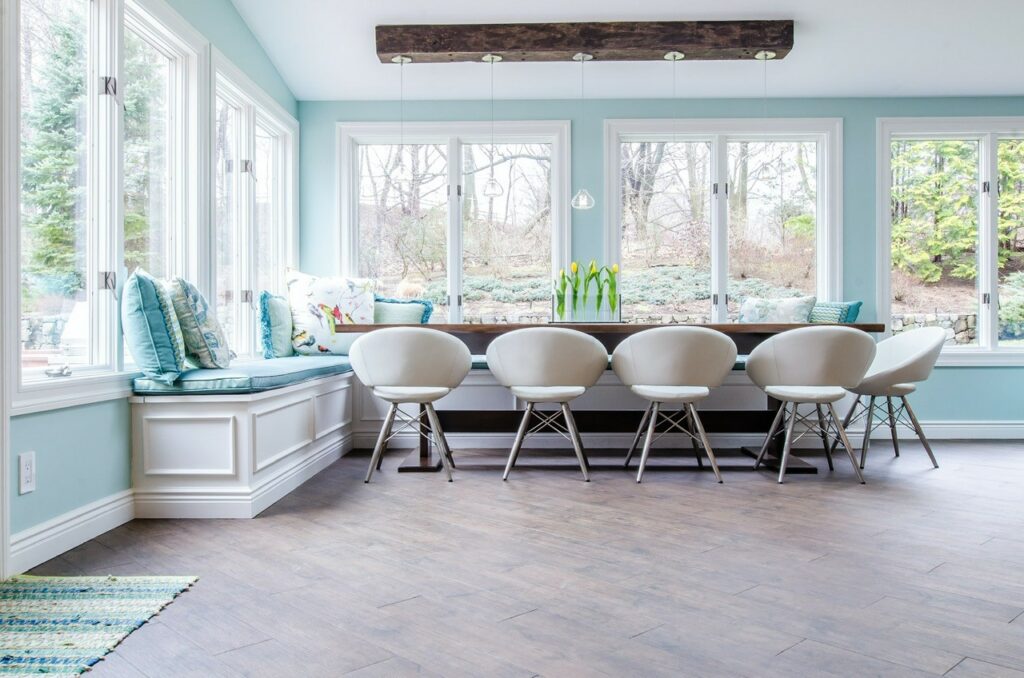
Everyone knows that when you decide to put your home on the market, you want to stage and upgrade everything so that your home look its best for all prospective buyers. You are correct when you assume that the better your home looks in listing pictures and in person when it is shown, the more offers you’re likely to receive, and they should be better offers too. Most sellers start their journey to the market by making a to-do list of all the things in and around their home that needs to be fixed or updated. However, once you start making this list, you may start to feel like it could go on forever, with so many things you need to do in order to make your house show perfectly. But that begs the question…..do you really need to do everything to make your home perfect before you list it for sale?
The list of things you think need to be fixed or updated translates into a lot of money for you to spend on a house you are about to move out of, and unfortunately, not everything you do is going to pay off at the closing table. That’s why its important for you to know what to fix and what to let slide, but making these decisions can be tricky. The biggest thing to keep in mind is that it is absolutely necessary to fix any issues or defects that affect the function, safety or stability of any part of your home. That means it is critical for you to take care of any plumbing leaks, cracks in the foundation, minor electrical issues, pest infestations, and other safety issues. These are the issues that can hurt your home’s value if not addressed, and can even cause harm to the new occupants.
Once safety and function issues are addressed, it is important to remember that cosmetic repairs are not actually necessary. How much time and money you want to spend on things that are purely cosmetic is entirely up to you. The last thing you want is to get carried away on too many projects that won’t get you a significant return on your investment. We have compiled a list of a few updates and repairs you can skip when you are preparing your home to sell, without experiencing too many financial repercussions.
Older But Functional Appliances
Being able to list a brand new, state-of-the-art kitchen as one of your home’s advantages may be very enticing, and of course you may assume that it is a must-have in order to capture buyers’ attention. But while new appliances such as a refrigerator, dishwasher or oven can be appealing you should think of these items as merely a nice bonus. Not having them is rarely a deal breaker for someone who otherwise loves your home. Especially in hot seller’s markets, which we are still seeing, old but working appliances do not really need to be replaced or upgraded. Instead, be sure to give these appliances a thorough cleaning and make sure that every function is working as intended, including all of the rarely used cycles on your dishwasher and the self-cleaning function of your oven. Change the filter in your refrigerator’s water and ice system, and clean the vent above your stove. If everything is in good working order, you don’t need to worry with anything else.
On the other hand, if your older model appliances are worn out, broken, missing some parts, or limited in their intended functionality, then you should consider replacing them before you sell your home. There are still ways you can save on this endeavor though, and hopefully bring your costs down low enough that you can make your money back at the closing table. Since, brand-new, top of the line appliances can cost a fortune, there’s no need to splurge on the best appliances money can buy. Instead, consider buying used or floor models that can still add a lot of value to your home without your bank account taking such a large hit.
Moderately Dated Kitchen and Bathrooms

One of the biggest questions sellers have when they decide to sell a home they have lived in for quite some time, is whether or not to update the kitchen and/or bathrooms. The biggest thing you need to consider is cost. A kitchen or bathroom remodeling project can be quite costly and time-consuming, but you will only recoup about 55-60% of the amount of money you put into the project when it comes to your final selling price. That means there are a few things you need to consider before you jump into a major renovation project.
First, remember that your vision of a perfect kitchen or bathroom may differ greatly from what a potential buyer may want. With all the home decor styles available for you to choose from, trying to second-guess what most people will want isn’t realistic. You run the risk of designing the perfect room, sinking a ton of money into turning your vision into a reality, only to have a potential buyer be less than impressed by a room that doesn’t match their preferred style. Many people have creating their dream kitchen or bathroom in mind when they buy a home, so there’s also a chance that the person who purchases your home will undo a lot of the work you put in.
So with all of that in mind, as long as your kitchen and bathrooms merely look a tad dated but are fully functional, your only concern should be making sure these rooms are clean and clutter-free. Your agent can phrase the description and stage photos in a manner that will present the space as full of potential, and easily customizable to the buyer’s preferences.
Flooring

If your home already has hardwood floors, there’s nothing you need to do beyond making sure they are freshly shined and polished before the staging or showing. Sure, the next homeowner may rip it out and replace it with their choice of flooring, so let them! There’s no need for you to incur the expense of a flooring upgrade when you have good quality floors that someone may simply not like the style of. Surprisingly enough, the same is true for the carpeted areas of your home. Even if you have older carpets, you will be fine to simply hire a professional cleaning company rather than investing money into replacing them. The only circumstance under which you should consider ripping everything out and replacing the carpet is if you have areas with bad odor from pets or large stains that cannot be removed.
Cracked Driveways
Don’t be fooled into thinking that the exterior of your home needs to be completely perfect in order to entice buyers based on your curb appeal. Keeping your lawn freshly cut and free of the clutter from children’s toys is a must, just like you will need to stay on top of flower beds and shrubbery. One thing you do not need to be concerned with is fixing every small, minor and insignificant crack in driveways and walkways. As long as the cement hasn’t buckled up and created a tripping hazard, you can ignore small imperfections. Such cracks are incredibly common, and fixing them is difficult and expensive. You cannot simply repair a crack, but rather, you would need to re-pave the entire section, which would cost far more than the upgrade is worth. Only consider spending money on this sort of renovation if the imperfections are big enough to be hazardous for driving or walking.
Neutral Design
Trends in home decor come and go, especially with the colors we choose for walls and furnishings in our homes. What looks cool and exciting today can become dated in a heartbeat, and even while a trend is in style, it may be completely off-putting to prospective buyers with more traditional tastes. When you decide to sell, you want to reach the widest pool of potential buyers, and attract the most people to your listing and showings. So if you have a house filled with neutral colors and designs, it is just fine to leave things this way. By providing potential buyers with a blank slate, you are allowing them to more easily envision themselves and their tastes in your home.
If you’re repainting a room, door, trim or cabinetry because the areas do need a fresh coat of paint, you should resist the temptation to choose trendy colors that may not have a long lifespan. Stick to a neutral palette featuring colors such as whites, beiges and light grays. If you are going to fix any broken or damaged things like light fixtures, faucets and cabinet hardware, use the same philosophy. Never replace them with something too obnoxious or trendy. Instead choose common fixture styles that will have mass appeal to almost all buyers. These are the small touches that new owners are normally excited to tackle on their own!
Remember Your Home’s Potential
Don’t feel overwhelmed by the temptation fix everything you think is wrong with your house to get more and higher offers. You’ll only be wasting your time and money on unnecessary upgrades that you could use to cover closing costs. You aren’t going to see the return on your investment and you have enough on your plate to stress out about with your impending move. Focus on showing off your home’s potential rather than trying to achieve perfection. And if you’re still in doubt about what kind of repairs to make before listing your home, your real estate agent will be able to guide you toward deciding what renovations are and are not actually needed for your home.

